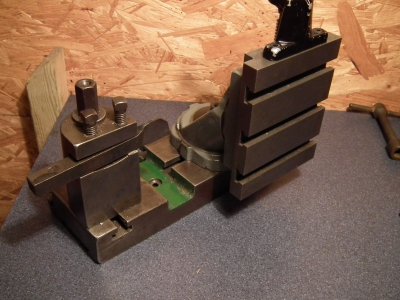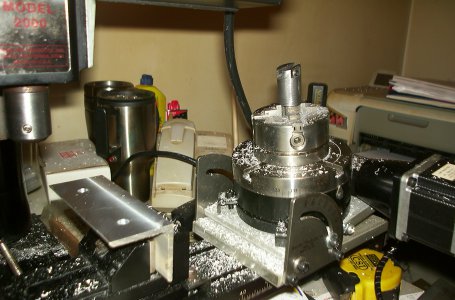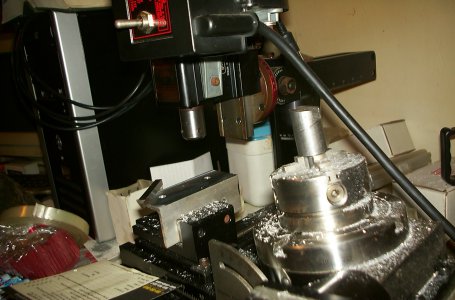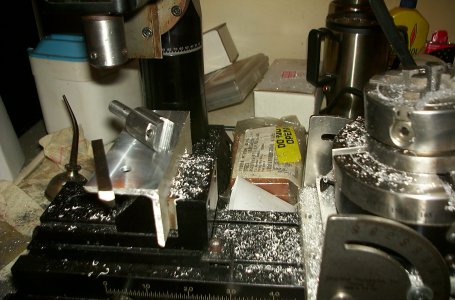I was about to start a new thread to ask this question, but hopefully it will add to this one which seems to be aimed at beginners.
I have had problem fly-cutting on my lathe, in that if the work is longer than the sweep of the cutter, the cutter starts to take another cut at the rear as it passes.
How can this happen, surely the first cut has made the work square with the spindle?
My thoughts are that this is due to some flex in the tool, or the carriage being set to cut ever so slightly concave when facing off, (I have read that this was a military requirement, my Atlas is 1941 ish) maybe I was taking too deep a cut, not having at the time yet sorted a micrometer carriage stop I was guessing a bit..I'm still working on that.
I was using my Atlas 10f, with an MT fly-cutter and a Myford milling slide fitted to my turret cross slide, which I would think is pretty rigid, other opinions may differ....picture added for critical appraisal..

..
Great thread, keep 'em coming.
Bernard






